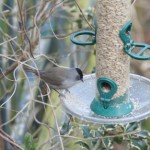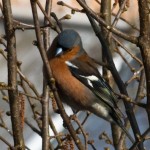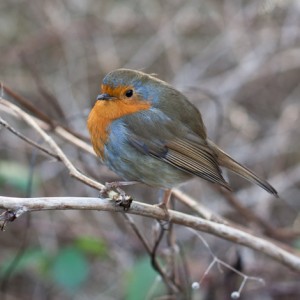This weekend (28th and 29th January) sees the next instalment of the world’s largest wildlife survey. The RSPB has been running the annual check on the state of garden birds each year for 33 years. It started life as a survey done by members of its Young Ornithologists Club before being made open to all. Last year the Big Garden Birdwatch had 609,177 participants who saw a grand total of 10,262,501 birds.
So, why is the Big Garden Birdwatch important? Each year it provides a snapshot of the status of the more common birds that we see every day (and some not so common birds) and, because so many people take part it gives a good average for the UK as a whole. Over the years it has highlighted the reduction in common birds such as house sparrows and starlings, which, although spotted by a large proportion of the public are not around in the same numbers as they used to be.
 It also highlights when different bird species start visiting gardens in bigger numbers. One year may be an anomaly, several years establishes a trend. Recent increases have been seen from long-tailed tits, bullfinches and goldfinches, mainly due to the increase in bird food types offered by those feeding the birds.
It also highlights when different bird species start visiting gardens in bigger numbers. One year may be an anomaly, several years establishes a trend. Recent increases have been seen from long-tailed tits, bullfinches and goldfinches, mainly due to the increase in bird food types offered by those feeding the birds.
A third reason that the birdwatch is important is that it has highlighted changes in migration patterns such as blackcaps which rarely overwintered a few years ago, but are now regularly spotted in gardens in Winter (in fact I have had one visiting my birdfeeders every year for three years).
 The top five birds seen last year were House Sparrow, Starling, Blackbird, Blue Tit and Chaffinch, although there were some unusual sightings including ravens, buzzards and red kites. Not unexpectedly the top five were similar in Northamptonshire, but with Woodpigeons pipping the Chaffinches for fifth spot. What I find interesting about the results is that there are some birds such as robins and blackbirds which were spotted in high percentages of gardens, even if the average number per garden was not very high (also possibly hindered in some cases by an inability to tell the males and females apart).
The top five birds seen last year were House Sparrow, Starling, Blackbird, Blue Tit and Chaffinch, although there were some unusual sightings including ravens, buzzards and red kites. Not unexpectedly the top five were similar in Northamptonshire, but with Woodpigeons pipping the Chaffinches for fifth spot. What I find interesting about the results is that there are some birds such as robins and blackbirds which were spotted in high percentages of gardens, even if the average number per garden was not very high (also possibly hindered in some cases by an inability to tell the males and females apart).
So, how do you take part? Simple. Choose one hour this weekend (28th / 29th January), I find mornings are normally better for bird activity, write a list of the birds that you are likely to see (include a line for male and females if you can tell them apart) settle back and count the birds that come into your garden. Be careful not to count them twice, only count the maximum number that you can see at any one time. Then, submit your sightings online at www.rspb.org.uk/birdwatchresults . You can also find a useful guide to help you identify birds on their website.
So, happy birdwatching and thank you for taking part in a wildlife survey.
